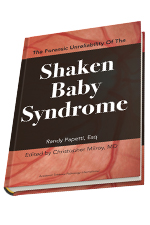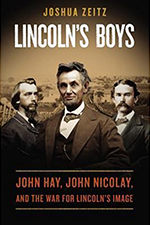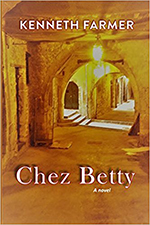 VERDICT: Touchdown!
VERDICT: Touchdown!
The Forensic Unreliability of the Shaken Baby Syndrome
By Randy Papetti (La Jolla, CA: Academic Forensic Pathology International 2017). 340 pgs. $150. Order, www.sbsbook.com/.
Reviewed by Kathleen Pakes
An infant is found nonresponsive with no visible signs of trauma. The frantic caregiver calls 911. The child is rushed to the hospital, where a CT scan reveals thin subdural hemorrhage and brain swelling. Because the caregiver cannot explain how the child developed these symptoms, the hospital child-protection team diagnoses child abuse. The child-protection team informs the police and the child’s family that the “injuries” are a result of abusive head trauma (AHT) and could only have been inflicted with the force of a high-speed car accident or multistory fall. The caregiver is arrested. As the criminal process unfolds the child abuse team advises the police, medical examiner, and prosecution. At trial, the child abuse pediatrician informs the jury that the child’s “injuries” were caused by abuse. The caregiver is convicted.
But is the caregiver guilty?
Want to Review a Book?
Please request a book and writing guidelines from Wisconsin Lawyer managing editor Karlé Lester, at klester@wisbar.org or (608) 250-6127. Reviewers may keep the book reviewed. Reviews of about 500 words are due within 45 days of receiving the book. Reviews are published, space permitting, in the order received and may be edited for length and clarity.
The author, a seasoned trial attorney and expert in litigating AHT cases, challenges the reader to take a hard look at the scientific foundation of the AHT diagnosis: Is the “abuse diagnosis” a scientifically validated opinion, or the product of social policy, bias, flawed methodology, and rush to judgment? Are hospitals really testing for rare (or not so rare) conditions or alternative explanations? Can accidental actions lead to the same symptoms as abusive actions? Are yet-undiscovered biological processes causing symptoms for which “abuse” is the diagnosed etiology? How accurate is any “abuse” diagnosis?
In the era of hospital staff turned prosecution team members, and when criminal prosecutions have been streamlined into “the last person with the child did it,” the author chronicles the rise to power of child advocacy systems and the corresponding failure of institutional medicine and the prosecutorial and judicial professions to question and challenge that power. At the same time, lack of scientific foundation supporting the AHT diagnosis has generated a backlash from various scientific specialties and researchers challenging the accuracy of the AHT diagnosis and criticizing systemic overreliance on a mere hypothesis.
For readers experienced in the legal battles surrounding AHT, the book provides new insights for challenging the continued admissibility of AHT diagnoses and testimony. For readers unfamiliar with the medical literature surrounding the AHT controversy, this text, edited by a forensic pathologist, is a time-saver – exceptionally well written and easy to follow. The author effectively and efficiently organizes controversial scientific topics into chapters heavily footnoted with current references to biomechanical engineering and medical literature and legal decisions.I highly recommend this publication for all lawyers facing cases involving any child abuse allegation.
Kathleen Pakes, Univ. of Louisville 1995, is the assigned counsel division director for the State Public Defender and member of the SPD Forensic Practice Group.
 VERDICT: It’s a Keeper
VERDICT: It’s a Keeper
Lincoln’s Boys: John Hay, John Nicolay, and the War for Lincoln’s Image
By Joshua Zeitz (New York, NY: Viking Penguin, 2014). 400 pgs. (paperback). $14.88. Order, www.amazon.com.
Reviewed by Thomas J. McClure
Author Joshua Zeitz taught American history and politics at Cambridge, Harvard, and Princeton universities and authored several books and articles on these topics for major newspapers and magazines such as the New York Times, the Washington Post, The New Republic, and The Atlantic. The quality of Zeitz’s scholarship shows in this remarkably well-sourced biography of Lincoln’s two young Civil War White House secretaries: John Nicolay and John Hay.
More than a biography, Lincoln’s Boys is the story of how Nicolay and Hay, diverse in every way from each other, initially Lincoln skeptics, eventually became Lincoln’s biggest defenders and largely responsible for the enduring Lincoln legacy personified in the Lincoln Memorial monument.
The book follows a roughly linear progression, from Nicolay’s and Hay’s youth in 1830s frontier Illinois, through their deaths as Washington notables (Supreme Court Marshal – Nicolay, Secretary of State for two presidents – Hay) at the turn of the century. In between, Zeitz tracks Nicolay’s and Hay’s coming of age as journalists, chance meeting in Springfield, Ill., in 1851, fledgling Republican Party experiences in 1860 leading to their improbable White House employment during the 1861-65 Civil War years, and post-war distinguished governmental service.
But the apotheosis of their relationship was their 15-year collaboration, in their middle ages, creating their formidable opus of Lincoln and his times: their Lincoln biography, the 10-volume, 1.2 million-word Abraham Lincoln: A History. Neither was an abolitionist, nor saw Lincoln as god like – but concluded Lincoln was a common “man of the people,” extraordinarily gifted, with “uncommon sagacity and humanity” to benefit others.
This is a good read for history buffs and thought provoking for attorneys who want to make a difference.
Thomas J. McClure, Marquette 1980, is a solo trial attorney and general practitioner with McClure Law Offices, Delafield.
 VERDICT: Touchdown!
VERDICT: Touchdown!
Chez Betty
By Kenneth Farmer (Milwaukee, WI; HenshchelHAUS Publishing, 2017). 297 pages. $16.95. Order, www.amazon.com.
Reviewed by Greg Grobe
The narrative opens with the story’s main character – Alan Newberg – a burned-out real estate attorney from Schaumberg, Ill., deciding to chuck it all and, spontaneously, heading to southern France to relax and refocus (isn’t that a shared fantasy of most lawyers?). As Newberg arrives in the Mediterranean seaside village of Villefranche-Sur-Mer, the book’s vivid imagery makes the reader feel like he or she is actually strolling through the town’s steep stairways and ancient passages, viewing the quaint shops and pastel-colored apartments, and smelling the aroma of the French pastries baking in the Boulangerie-Patisserie, located across the street from Newberg’s hotel (the Chez Betty).
We soon discover that Newberg’s recuperation, unfortunately, will not go as planned. Shortly after coming to town, he is falsely accused of a murder occurring just before his arrival. As the story continues, we also discover that this is not a classic whodunit tale. Rather, we are treated to a story within the story, which, at its heart, is an intriguing and informative comparison of the French and American criminal justice systems.
As Newberg works his way through the legal process, from the initial investigation by a member of the local Gendarmerie Nationale, to his appearance before several judges (all responsible for different roles), we view the many differences between the two systems and are subliminally asked to evaluate the relative merits of each.
For example, Newberg immediately finds out that the “right to remain silent” is not the rule in France, where failure to speak can be used as “evidence that you are hiding something.” However, as we learn more, the differences do not necessarily lead to the conclusion we might expect – while some features of French criminal justice seem remarkable for their lack of fairness and basic rights, others appear to be vast improvements over comparable procedures in America. By the time the book reaches its dynamic conclusion, the reader is challenged to decide which system provides a more fundamentally sound method of reaching the truth. Could it be that ours is not the be all and end all of jurisprudence, and that we might actually learn something from another country’s methods?
Farmer, recently retired from the Dane County District Attorney’s Office, obviously did his homework on the detailed nuances of the French judicial system. Fortunately for us, instead of publishing a dry textbook on the subject, he cleverly cloaks his findings within the pages of an enjoyable novel. The reader doesn’t even notice the valuable civics lesson until it’s too late – and by then is hooked on the story line.
When I started the book, I was simply hoping for an easy, interesting read. Mission accomplished. But beyond this I came away with a thoughtful perspective on comparative justice, essentially two benefits for the price of one. Vive la France!
Greg Grobe, U.W. 1987, practices labor and employment law at the Law Firm of Conway, Olejniczak & Jerry S.C. in Green Bay.
